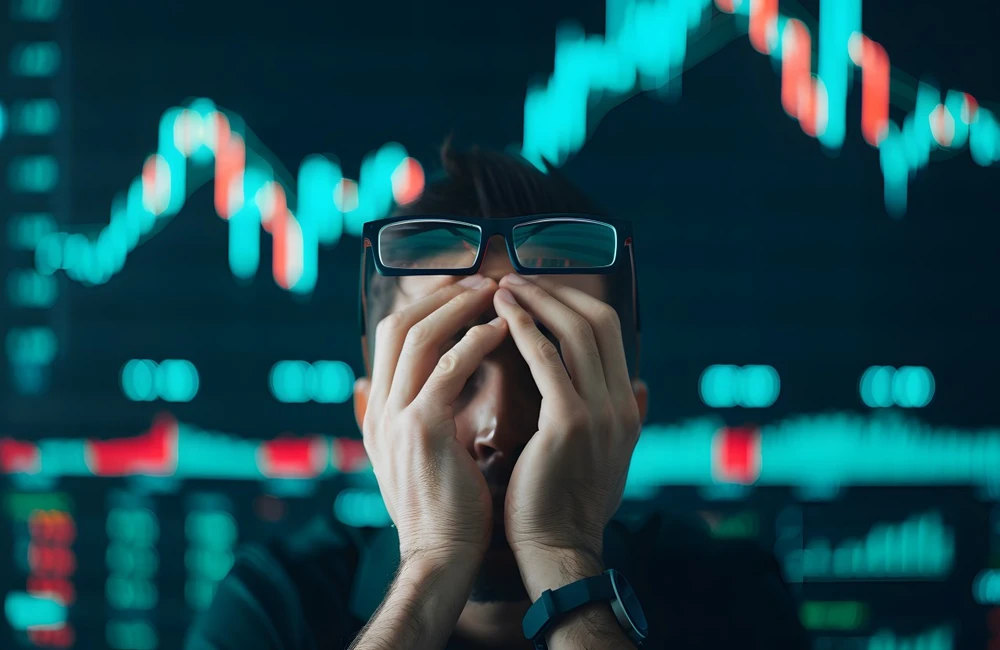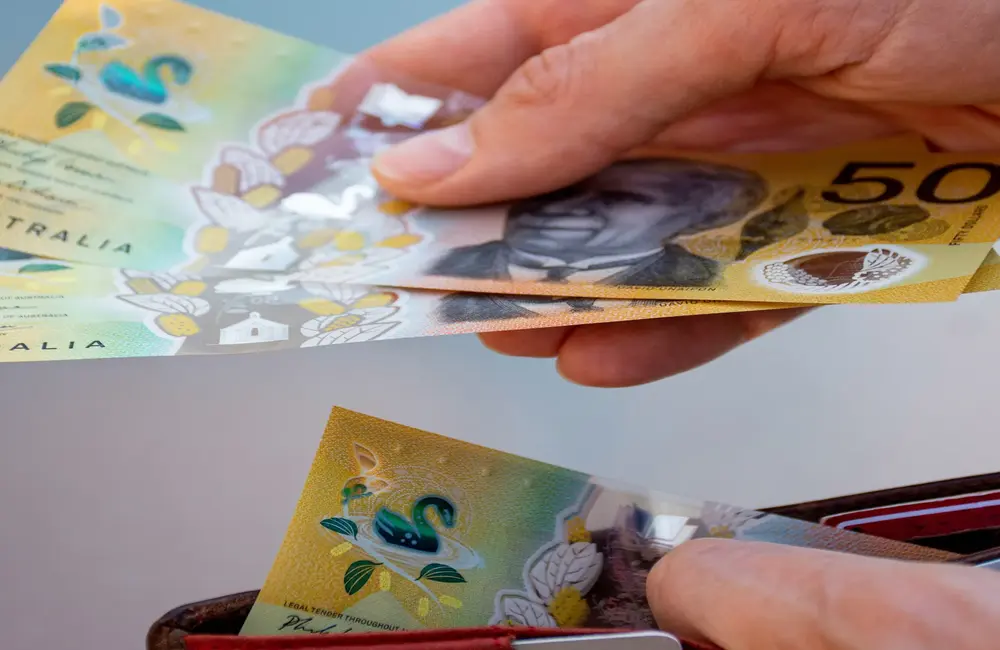The ASX futures were down 51 points, or 0.7 per cent, at 6995 at 8.00 am AEST on Wednesday, indicating trading will be negative.
The S&P 500 dropped 1.6% overnight. The blue chip Dow Jones Industrial Average fell 1.8%, and the technology-heavy Nasdaq Composite declined 1.6%.
“In a longer timeframe, it’s the outcome where we were hoping this was a brief incursion is now a much lower-probability scenario.” That translates into supply chain issues and inflationary pressure for a longer period of time,” said Andy McCormick, chief investment officer at T. Rowe Price.
Yields on US 10-year Treasury Notes, one of the world’s safe-haven assets, fell for a second day to 1.72%, from 1.96% on Friday. Yields fall as prices rise.
Oil prices surged, climbing back above $100 a barrel to their highest level in years. Brent crude, the global oil benchmark, surged more than 8 percent to $106.26 a barrel.
At home, the S&P/ASX 200 fell 0.7% to 7096.5 on Tuesday, following the Reserve Bank’s decision to keep the cash rate at an all-time low of 0.1%, despite inflationary pressures.
Governor Philip Lowe described the Ukraine crisis as a “major new source of uncertainty” in comments on Tuesday and stressed the bank would be patient on raising rates.
The battered tech sector was to the fore, gaining 5.7% on a day that saw Block’s ASX-listed stocks soar another 13% for a 51% rise in three sessions since the payments titan revealed its quarterly results. The sector remains 20% lower in 2022.
Energy stocks were buoyed as Woodside, Ampol, Viva and Beach rose 0.5%-1.2%, while the weighted financial sector halted a three-session losing streak, as ANZ, Westpac, Commonwealth and NAB climbed between 0.65% and 1.5%.
Stock markets in Asia were mixed on Tuesday. Japan’s Nikkei 225 gained 1.2% and Hong Kong’s Hang Seng Index adding 0.2%. In Europe, the pan-continental Stoxx Europe 600 index dropped 2.4%.
Gold futures soared 2.5% to $US1949 in commodities. Iron ore climbed 3.9% to US$144.45.
In local bond markets, the 10-year Australian bond yield climbed to 2.18%.
At 8.00am AEST to 72.60, below the previous close of 72.60. The WSJ Dollar Index, which measures the US dollar against 16 other currencies, advanced to 90.41.
Asia
Looking at Asian markets, Chinese shares finished higher, following gains in other Asian equities markets. Investors are concerned about the war in Ukraine, while economic data from China soothed worries about the world’s second-largest economy slowing down. China’s official manufacturing and non-manufacturing February PMIs beat expectations, Oanda said. “That helped ease worries about a China slowdown and has pushed back property sector jitters off the front pages for now,” Oanda says.
The February Caixin manufacturing PMI also improved, swinging into expansion territory from contraction in January. Financials were higher, with Agricultural Bank of China up 0.7% and Bank of China gaining 0.6%. The Shanghai Composite Index ended 0.8% up.
Stocks in Hong Kong ended higher, with the benchmark Hang Seng Index rising 0.2 percent. A stabilization effect on Chinese stocks is being felt ahead of China’s annual National People’s Congress, which begins this weekend, and should support shares of Chinese companies listed in Hong Kong, KGI Securities says. But KGI said the Ukraine conflict is set to keep stock-market volatility on the high side. It places resistance for the HSI at 22400.
Advancers were broad-based, led by Xinyi Glass, which rose 5.1%, Wuxi Biologics (2269.HK) which gained 4.8% and AAC Technologies (2018.HK) which added 4.2%.
Japanese shares ended the day up driven by shipping and defence stocks, amid geopolitical risks related to the war in Ukraine. Top shipper Mitsui O.S.K. Lines rose 6.2% and Mitsubishi Heavy Industries jumped 5.1%. The Nikkei Stock Average gained 1.2. Traders are zeroing in on headlines on Ukraine.
Europe
European markets fell as fears of the Ukraine-Russia conflict persisted and most stocks were in negative territory. The pan-European Stoxx 600 moved 2.4% lower.
“Trading screens have gone red across global markets once more, as market sentiment turns once more towards risk aversion as the situation in Ukraine continues to deteriorate,” IG analyst Chris Beauchamp says.
“Defence spending is forecast to grow significantly in this new fraught world, which has continued to buoy BAE Systems higher, whilst the ever-increasing commodity prices have left miners with the wind in their sails.”
The FTSE 100 fell 1.7% in London on Tuesday after the situation in Ukraine deteriorated and the price of oil rose despite speculation about US plans to draw on strategic reserves.
Trading in shares of Russia’s VTB Bank was suspended on the London Stock Exchange after the exchange said Bank of New York Mellon had stepped down as the depositary for the company.
The biggest loser of the session was steel and mining company Evraz PLC, which operates mainly in Russia, whose shares at the end of the day fell 29% to 102.85 pence, with Russian mining company Polymetal International close behind with a 26% drop to 258.90 pence. On the plus side BAE Systems was the top climber on the day, ending up 3.7% to 746.20 pence, led higher by hopes that it would benefit from an increase in defence spending as a result of the war in Ukraine.
The invasion and the sanctions that followed have dealt a heavy blow to Russian markets, driving investors to dump Russian stocks. A big, sudden interest-rate hike by the nation’s central bank helped send the ruble falling. The country’s top bond-trading platform, Tradeweb Markets Inc., deleted Russian securities Tuesday, saying it faced Western sanctions.
The Russian ruble tumbled 6.3% against the dollar on Tuesday after losing nearly 30% on Monday. Market-data services have posted limited price updates this week, indicating that few trades are being made. The Russian stock market stayed shuttered after nose-diving last week.
North America
U.S. stock indexes declined and bond yields dipped Tuesday, while oil prices surged to multiyear highs as Russia’s invasion of Ukraine continued to roil markets.
Stock markets have taken a beating in 2022, with the S&P 500 and Nasdaq experiencing their worst two-month stretches since March 2020 to kick off the year. The war in Ukraine has put further strain on investors’ mood. While just 1% of S&P 500 companies’ revenue comes from Russia and Ukraine, according to FactSet, investors remain concerned about ripple effects across the global economy.
The geopolitical crisis also arrived as economies already grappling with the highest inflation in decades were facing additional pressure for central banks to raise interest rates.
“Now we’re in shock mode, and that shock adds to the biggest risk we have—sustained high inflation,” said Jon Maier, chief investment officer at Global X ETFs.
The S&P 500 fell 1.6%. The blue-chip Dow Jones industrial average slumped 1.8%, and the technology-heavy Nasdaq composite was off 1.6%.
Oil prices surged back over $100 a barrel, their highest since 2014. Brent crude, the global oil benchmark, rose more than 8 percent to $106.26 a barrel. Benchmark European natural-gas prices surged more than 24%.
With crude prices climbing, members of the International Energy Agency agreed Tuesday to draw supplies from oil reserves in an attempt to put the brakes on price gains.
Stocks of energy companies climbed with oil prices, sending Occidental Petroleum up 5.7 percent and Chevron up 3.3 percent. Refiners backed away from buying Russian oil, and banks are refusing to finance shipments of Russian commodities, oil executives, bankers and traders say. Russia is the largest single exporter of gas and a key source of crude oil.
Demand for safe-harbor assets pushed gold prices up, and drove down the yields of government bonds. Gold prices rose 1.9%. The yield on the benchmark 10-year US Treasury note dropped to 1.708% Tuesday from 1.836% Monday as investors wager on the Federal Reserve won’t move as aggressively to tame inflation. The yield on German government bonds turned negative for the first time since January. (Note: Yields fall as prices rise.)
A sharp decline in government bond yields also weighed on bank stocks. The KBW Nasdaq Bank Index of large U.S. commercial lenders fell over 6%.
Stock indexes around the world have swung in recent days as investors try to measure the potential global economic fallout from the invasion and subsequent sanctions. Tightened supplies of Russian commodities could drive already high inflation even higher, but investors believe the overall impact on the world’s largest economies will be muted.
“We’re in a situation that I don’t think there’s an actual playbook for,” said Eric Merlis, managing director of corporate risk solutions at Citizens.
Bitcoin traded above $43,602 recently, up about 4.7% from its 5 pm New York level on Monday, CoinDesk said. The war in Ukraine has propelled demand for cryptocurrencies, giving a boost to bitcoin and other coins.
In corporate news, shares of Target rose almost 10 percent after the retail chain reported strong sales during the holiday season. Albertsons climbed 7.8 percent after the supermarket chain announced it had initiated a strategic review. Workday rose 4.9% after releasing earnings late Monday that topped estimates.
“The question from here: Is the economy capable of continuing to chug ahead through these segments and avoid outright contractions?” Matt Stucky, senior portfolio manager at Northwestern Mutual Wealth Management Company.
In other commodities, wheat was at its highest levels since 2008.
Negotiations for a cease-fire have so far yielded no concrete results. Russia and Ukraine have agreed to more talks, and investors have taken solace in it happening. Yet Moscow is flooding the country with manpower and equipment, and Russian forces have embraced a strategy of bombardment of civilian areas in a bid to demoralize resistance.
“I don’t know what we get from negotiations, but on the ground there will no let up because [Russian President Vladimir] Putin has to come out of this war with something to show for it,” said Hani Redha, a portfolio manager at PineBridge Investments.

























